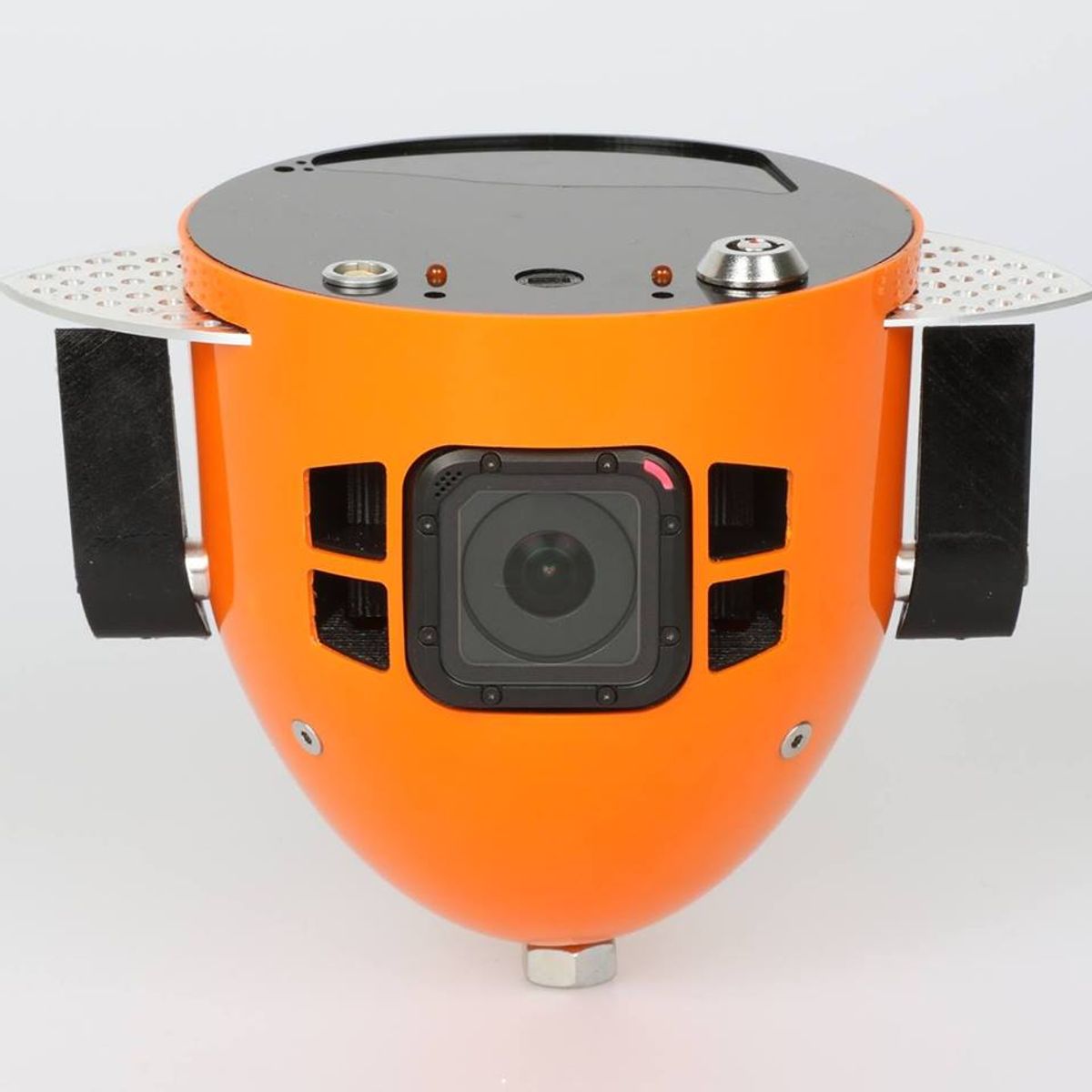In the context of things that are dangerous for humans to do, jumping out of an airplane tens of thousands of feet in the air and relying on a combination of fabric and string to keep you from plowing into the ground at a double-digit percentage of the speed of sound seems like it could certainly be one of the more dangerous (even if in reality it isn’t). While humans aren’t likely to stop doing this anytime soon, autonomous robots may be able to help by mitigating the risk somewhat, offloading hardware and tasks from skydivers to themselves in a chubby little orange package called the Freefall Camera.
The Freefall Camera (FFC), which David Alatorre Troncoso and David T. Branson III from the University of Nottingham presented this week at IROS 2017 in Vancouver, is an attempt to autonomously film skydivers in free fall. This is useful for a few reasons: First, it means that skydivers aren’t carrying their own cameras (these can get caught on the things that attach you to your parachute, which have a significant amount of importance in avoiding death). And second, it means that one skydiver doesn’t need to carry or point a camera if a group of skydivers want to record themselves doing synchronized maneuvers and tricks, which I guess is what happens when just jumping out of an airplane stops being exciting enough by itself.
Building a robot that can successfully control its position and terminal velocity relative to another falling object is not something that’s been done before. There are freefall cameras designed to work in microgravity, but that’s a much different challenge: this camera has to be able to maneuver in a 120 mph (190 km/h) stream of air, which is all about passive aerodynamics. To steer itself, the FFC uses four vertical ailerons to control yaw (and eventually horizontal position), along with a pair of retractable flaps that increase or decrease the robot’s drag to slow it down or speed it up. A GoPro does the recording while a CMUcam5 vision sensor tracks colored blobs to stay locked onto its subject.
Since the FFC is too big to be legally throw out of a plane over the U.K. without an open parachute, lead author David Alatorre Troncoso has been testing it out in a vertical wind tunnel:
The tests showed that the FCC could generally track a human within 0.25 meters vertically, and 12 degrees of the center of the camera’s field of view. Occasionally, the camera would get confused by backgrounds or bright lights, so the next incarnation of the system will use an infrared beacon for tracking instead.
At this point you may be wondering (as the IROS audience was) whether the designers of the FFC had thought at all about how to land it. They have, and it’s about what you’d expect: At a preset altitude, a little steerable parachute pops out of the top of the FFC, and it heads for whatever GPS coordinates you specify. Sadly, the FFC can’t be tested in the U.K., but we hear that someone in Dubai thinks it’s a cool enough idea that they’re paying for the FFC to be tested for real over there.

The final version of the FFC will include a bunch of upgrades. Besides the infrared beacon tracking, they’ll be able to follow paths (like orbiting around you), and multiple FFCs will be able to work together in a coordinated way. They’ll also include collision avoidance programming to keep them at a safe distance, although they’re not yet safe enough to use with groups of skydivers. The original prototype cost “much less than $500” to make, and future versions will be even smaller and cheaper. Let’s just hope that you won’t have to go to Dubai to try one out.
“Characterisation and Image-Based Flight Control of an Autonomous Free Fall Skydiving Robot,” by David Alatorre Troncoso and David T. Branson III from the University of Nottingham, was presented this week at IROS 2017 in Vancouver, Canada. You can follow the project on Facebook: https://www.facebook.com/freefallcamera
Evan Ackerman is a senior editor at IEEE Spectrum. Since 2007, he has written over 6,000 articles on robotics and technology. He has a degree in Martian geology and is excellent at playing bagpipes.



